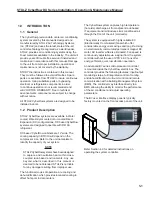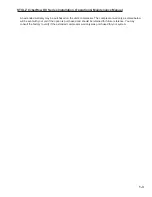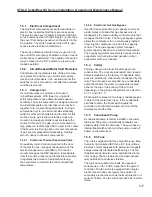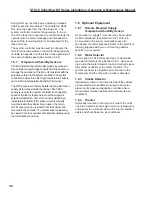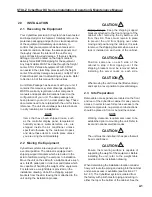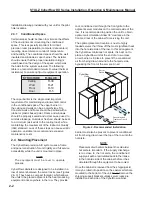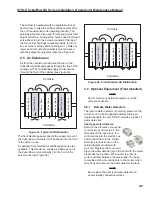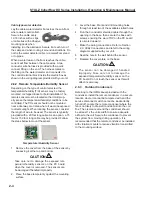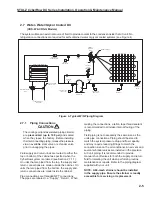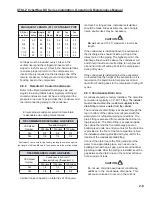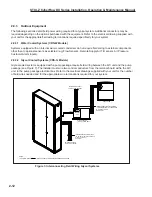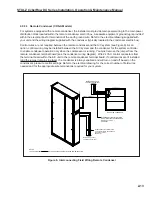
STULZ CyberRow DX Series Installation, Operation & Maintenance Manual
2-7
2.8 Split Air Cooled Systems
(CRS-A
Models)
Split air-cooled systems with a remote condenser will require fi eld installed refrigerant piping. All split systems
are shipped with a dry nitrogen charge of 100 psig. Release the pressure via an available stem valve or schrad-
er valve prior to uncapping the pipes. Do not release the pressure until the fi eld installed refrigerant piping is
ready to connect
.
Systems utilizing a remote condenser will require a copper liquid line and discharge line. See
Figure 5 and refer to the IOM documentation provided with the condenser.
SIGHT
REFRIGERANT
FILTER/DRIER
REMOTE AIR COOLED CONDENSER
COMPRESSOR
HP
LIMIT SWITCH
HIGH PRESSURE
VALVE
SCHRADER
LP
VALVE
SCHRADER
LIMIT SWITCH
LOW PRESSURE
DISTRIBUTOR
THERMAL
EXPANSION
VALVE
RECEIVER
RELIEF VALVE
PRESSURE
CONTROL VALVE
HEAD PRESSURE
CHECK VALVE
CHECK VALVE
EVAPORATOR COIL
FIELD PIPING BY OTHERS
INTERCONNECTING
SCHRADER
VALVE
BODY
GLASS
OPTIONAL COMPONENTS FOR FLOODED HEAD PRESSURE CONTROL
ELECTRONIC
TEMPERATURE
SENSOR
T
PT
PRESSURE
TRANSDUCER
(OPTIONAL)
HOT GAS
REGULATOR
ASC
ELECTRONIC
Figure 5- Typical Remote Air Cooled DX Piping Diagram
2.8.1 Refrigerant Piping
Refrigerant lines for the A/C unit are routed to either
the top or bottom of the cabinet as specifi ed when the
CyberRow system is ordered (see Section 2.8.1.1).
The connections are made inside the cabinet. The
pipe stubs are labeled; i.e. “Discharge”, “Liquid Line”.
The refrigerant piping should be isolated by the use
of vibration isolating supports. Provide supports
(clamps or hangers) as necessary every 5 to 10 feet
along piping runs to minimize vibration and noise
transmission. To reduce vibration transmission and
prevent pipe damage, when sealing openings in walls
use a soft fl exible material to pack around the piping.
After the piping is installed, seal the gaps between
the pipes and the entrance holes in the cabinet so air
won’t leak around the pipes.
All refrigeration piping should be installed with high
temperature brazed joints. Use standard refrigeration
practices for piping, leak testing, dehydration and
charging of the refrigeration circuits. For copper
to copper brazing, phosphorous alloy containing a
minimum of 15% silver is recommended. General
purpose silver brazing alloy with 45% silver is
recommended for brazing dissimilar metals.
Wrap wet rags around the pipes between the
areas to be soldered and any nearby refrigeration
components to keep excessive heat from traveling
through the pipe and causing damage. Clear all
pipe connections of debris and prep connections
for soldering. Use only “L” or “K” grade refrigerant
copper piping. Be careful not to allow solder/piping
Summary of Contents for CyberRow DX CRS-042-G
Page 94: ......

